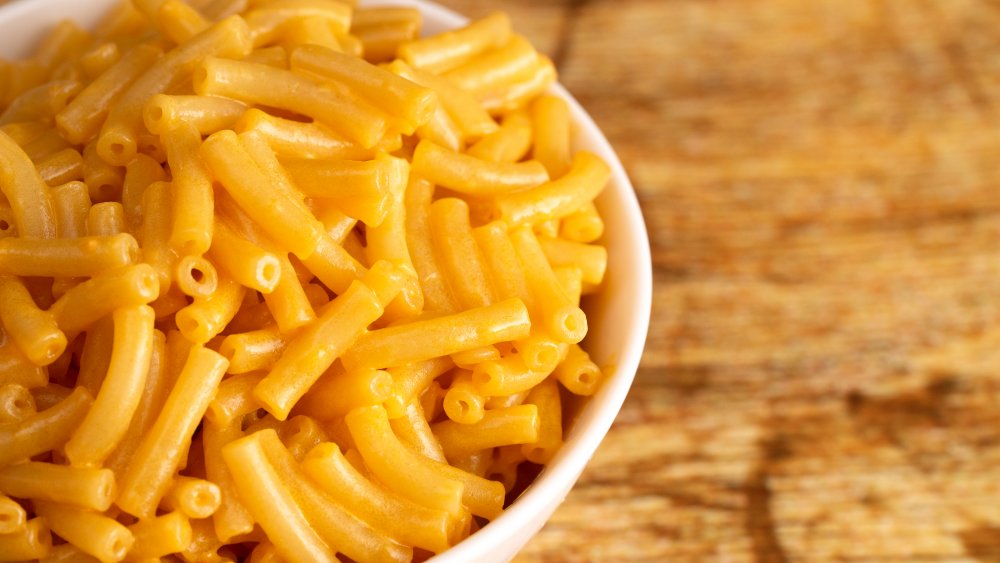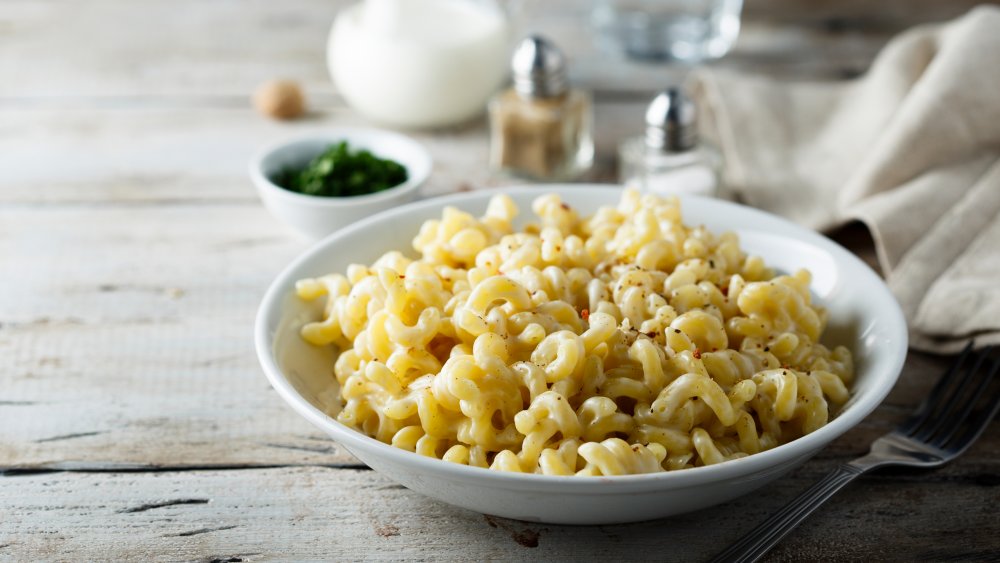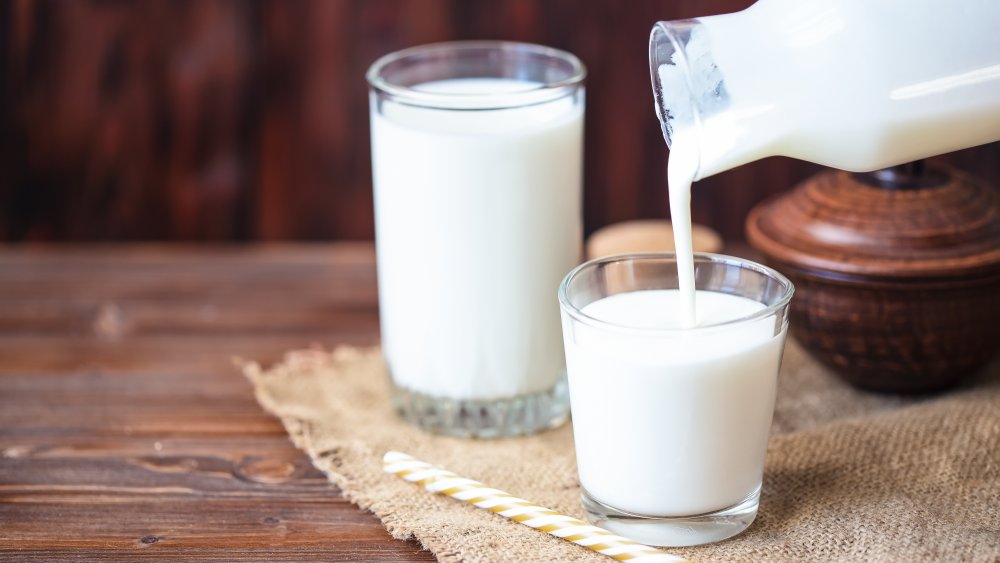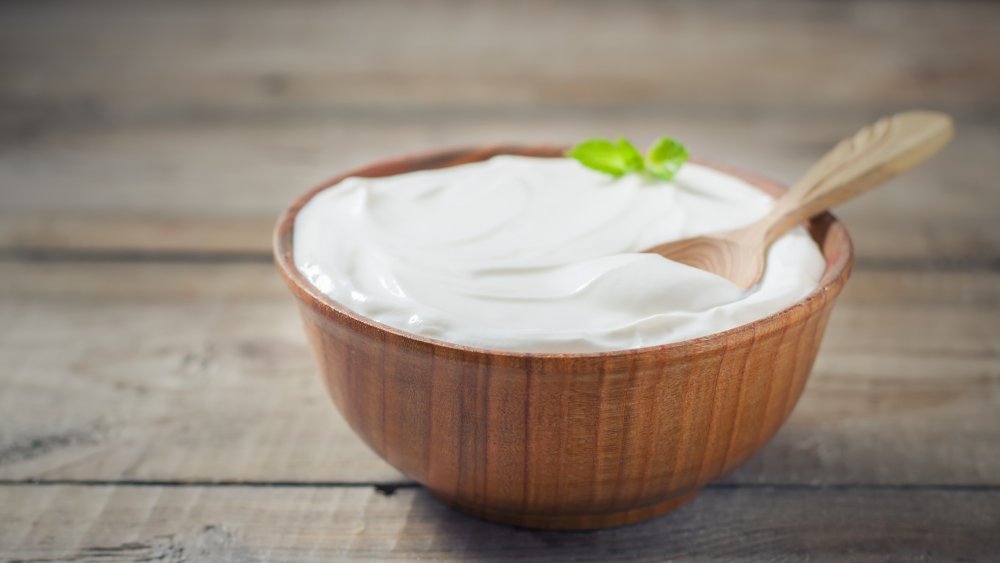The Secret Ingredient That Will Make Your Boxed Mac And Cheese Way Better
Boxed macaroni and cheese is a childhood staple that many of us enjoy well into adulthood, the perfect answer to our cravings when we want comfort food but don't really feel like cooking. But if your tastebuds have matured a little and you've found yourself thinking that your boxed mac and cheese just doesn't hold up like it used to, there's a secret ingredient you can add that will liven things up.
Luckily, this tip doesn't require any complicated techniques or additional cooking time. You'll be able to improve your macaroni and cheese in the same amount of time it usually takes to make, the only difference being that this time you might actually like it as much as you did as a kid.
Why you should add buttermilk to your mac and cheese
The secret ingredient for better mac and cheese is buttermilk (via MyRecipes). Buttermilk is thick, rich, and tangy. That tang is essential in improving your standard boxed mac, which can be one-note compared to the homemade stuff. A touch of acid livens up all the flavors and cuts through the fattiness of the cheese powder and butter used in the standard boxed mac recipe.
All you need to do is swap the amount of milk called for in the recipe on the box with the same amount of buttermilk. It will add just the right amount of kick to balance out the flavors in your mac and cheese, and it will even make the sauce a bit creamier, thanks to buttermilk's viscosity.
If you don't have buttermilk, you could try using a buttermilk substitute, like kefir. But don't try the old "add vinegar to milk" trick in this recipe, because that buttermilk substitute will be thinner and have more bite than the real stuff.
The next time you pick up a few boxes of mac and cheese at the grocery store, grab a jug of buttermilk too. Best of all? After you've eaten, you'll have leftover buttermilk you can use to make fluffy pancakes, biscuits, and more.
What is buttermilk?
If you don't often use buttermilk, you may be curious about what exactly it is. It's not, as the name seems to imply, milk that has butter mixed into it. In fact, it's sort of the opposite.
Traditionally, buttermilk is what's leftover from the process of making butter (via Southern Living). Whole milk straight from the cow would be churned, causing the milk fat to solidify and turn into butter. The leftover liquid was buttermilk, which would become tangy with naturally occurring bacterial cultures.
Buttermilk lasted longer than fresh milk before refrigerators, so it was often used to cook with.
These days, buttermilk that you buy at the grocery store is more often just fresh milk that's been treated with lactic acid bacteria until it becomes tangy and thick. Buttermilk is high in protein and usually low in fat, though you can get full-fat varieties sometimes if you want a richer product.
If you're worried about not being able to finish a carton of buttermilk before it goes bad, not to worry. Not only does it last longer than most other fresh dairy products, but it also freezes well.
The best buttermilk substitutes for mac and cheese
If you want to make your boxed mac and cheese taste a little more refined but don't have buttermilk on hand, there are still some ways you can give it a rich, tangy taste.
As we mentioned before, the usual buttermilk substitute of adding lemon juice or vinegar to milk won't work here, as that mixture is too thin and could make your mac watery. Kefir, a fermented milk beverage that's like yogurt, is one option.
But what you might be more likely to have on hand is Greek yogurt or sour cream.
Plain Greek yogurt will add creaminess and tang to your mac and cheese. You might need to thin it with a little bit of milk before mixing it in. You can opt for 0 percent fat Greek yogurt if you're trying to cut calories, but we like to use Greek yogurt that's at least 2 percent fat for the best texture and flavor (5 percent is especially decadent).
Sour cream is another easy option. It's thick, creamy, and has a tang that can offset the richness of the cheese in your mac.
For a milder taste that still provides a rich creaminess, try stirring in some softened cream cheese. If you're craving a tang, a little squeeze of lemon juice might do the trick.



